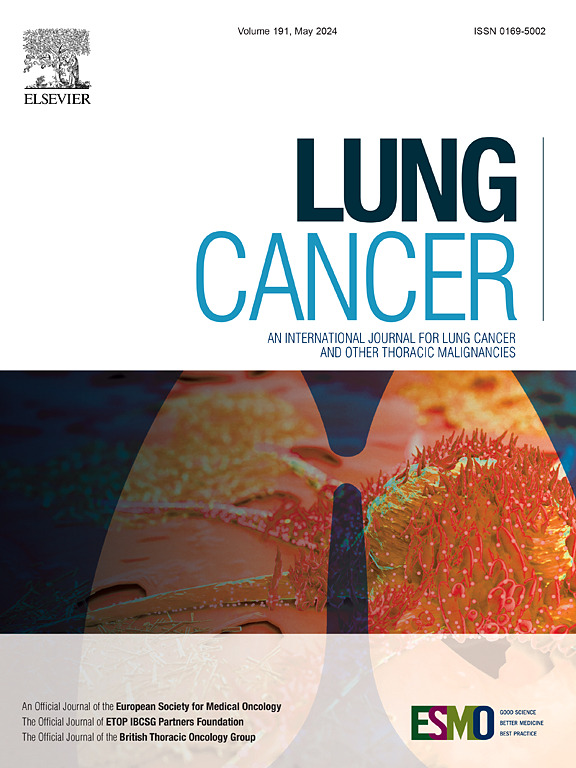Clinical characteristics and management of long survivors in extensive stage small cell lung cancer
IF 4.5
2区 医学
Q1 ONCOLOGY
引用次数: 0
Abstract
Background
Extensive disease small cell lung cancer (ED-SCLC) accounts for more than 70% of new diagnoses of SCLC with a 5-year survival of 12%. A limited percentage of ED-SCLC achieved a long term survival but their clinical and biological characteristics are largely unknown. Here we reported baseline clinical characteristics and treatment sequences of a large cohort of Long Survivors ED-SCLC compared to patients with poor outcomes.
Methods
The Epidemio-Strategy and Medical Economics (ESME) lung cancer data platform is a multicenter real-life database using a retrospective data collection process. We selected ED-SCLC patients diagnosed between 2014 and 2021. Long Survivors were defined as having an overall survival (OS) ≥ 24 months. Statistical comparisons were performed by Pearson’s Chi-square, and logistic regression.
Results
We identified 3150 ED-SCLC and 489 long survivors representing 13 % of the study population. mOS was 36 months (95 %CI 34 to 39) in Long Survivors and 9 months (95 %CI 8.9 to 9.4) in other patients. Compared to Short Survivors, Long Survivors were enriched in women, patients younger than 65 years-old, ECOG PS 0–1 at diagnosis less than 3 metastatic sites and never or former smokers. The C-statistic of the multiparametric model based on patient’s clinical characteristics was estimated at 0.70, with a 95 % CI (0.68, 0.73). Among those patients receiving a platinum-based chemotherapy with or without immunotherapy in first-line, a prolonged survival benefit from the chemo-immunotherapy strategy was found exclusively within the Long Survivors group even thus not statistically significant (p = 0.058).
Conclusion
Long Survivors represents a small proportion of ED-SCLC characterized by a less extensive disease and better general conditions at diagnosis. This group of patients is most likely to benefit from immunotherapy in first line setting. Biological characteristics of these patients should be investigated in order to inform clinical research for new therapeutic strategies.
求助全文
约1分钟内获得全文
求助全文
来源期刊

Lung Cancer
医学-呼吸系统
CiteScore
9.40
自引率
3.80%
发文量
407
审稿时长
25 days
期刊介绍:
Lung Cancer is an international publication covering the clinical, translational and basic science of malignancies of the lung and chest region.Original research articles, early reports, review articles, editorials and correspondence covering the prevention, epidemiology and etiology, basic biology, pathology, clinical assessment, surgery, chemotherapy, radiotherapy, combined treatment modalities, other treatment modalities and outcomes of lung cancer are welcome.
 求助内容:
求助内容: 应助结果提醒方式:
应助结果提醒方式:


